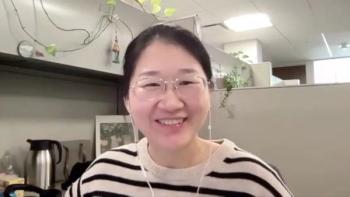
Provider Shortages, Coverage, Cost Are Top Barriers to Care: CHEST 2025 Experts
Experts at CHEST 2025 highlight rising costs, insurance complexity, and workforce shortages as major barriers to health care access in the US.
Costs, a shortage in the provider workforce, and insurance complexity are the top barriers to care in the US, agreed experts at the CHEST 2025 annual meeting. They explained that navigating coverage and medication costs is often overwhelming for patients and providers alike, and the national shortage of primary care and specialty physicians, particularly in rural and underserved areas, further restricts access.
The following experts discussed the biggest barriers to care in the US:
- Matthew Biszewski, PharmD, clinical pharmacist at Endeavor Health
- Sara Assaf, MD, assistant professor of pulmonary and critical care at the University of New Mexico School of Medicine
- Megan Dulohery Scrodin, MD, assistant professor of medicine in the Mayo Clinic School of Medicine
- Laurie Slovarp, PhD, CCC-SLP, professor in the School of Speech, Language, Hearing, and Occupational Sciences at University of Montana
- Umme Kulsum, MBBS, a medical graduate student
Transcript edited lightly; captions auto-generated.
Transcript
In general, in US health care, what is having the biggest impact on patient access to care right now?
Biszewski: A big issue is still going to be just costs and access and insurance status, and I think there's a lot of questions about that right now. Even on the pharmacy side, alone, knowing if a drug is covered, and if it is covered, how much it costs is such a difficult question to answer. I think primary care offices are getting so busy, we've been trying to push a lot more to patients, to have them find out: is your drug covered, what would the copay be, what the expectations would be.
Oftentimes, I find myself calling insurances on their behalf because they're just stuck. I have to tell patients all the time, “I went to school for 8 years, and I've been doing this for 10 years after and I get confused and overwhelmed,” and to expect a patient who's older, has mild cognitive impairment, to do all this by themselves is just extremely difficult, and it's very easy for things to get lost in the shuffle.
Assaf: I think I'll answer something that is more New Mexico related, since I've been practicing there for the last few years. It's the shortage of physicians, I believe, especially in rural areas. It's very hard to retain physicians, mostly specialty ones, so it makes access to care very hard, especially in the more underserved areas over there.
Dulohery Scrodin: Honestly, I think it is the challenges with limited primary care. I think it really starts with the patient having a physician in general. It is hard to get to specialty care if you don't, at first, have primary care. We need more primary care providers across the US who are able to see patients and help them to address their chronic medical conditions or recognize illness.
We see a lot of patients that do not seek care because it's not accessible to them, because they have challenges getting into a doctor, or maybe they don't have health insurance coverage to do so. I think that is one of the biggest issues, is getting to medical care in the first place, either because of financial restraints from insurance coverage or lack of access to physicians.
Slovarp: It's hard to pick what is the biggest, biggest hurdle for these patients. There's a lot of things. Certainly, cost of care [is a hurdle]; cost of care just keeps going up and up. Part of that is because technology keeps going up and up, and we keep discovering more and more things that can heal patients, but that comes at a very big cost. And just access, I think, access is huge, because even though technology is advancing, it seems as though, as time goes on, less and less practitioners have the sufficient expertise to keep up with the need.
Digital therapeutics in general, is…already transforming our health care, and it's just going to continue to grow exponentially because of the accessibility that it provides for individuals.
Kulsum: In my opinion, I think there are lots of uninsured patients, and it's a reason [why] patients are not having access [to care]. Another reason is patients sometimes cannot afford medications. Other than that, there are also other reasons, like there are lots of foods which are not nutritious. Patients are taking lots of foods which are unhealthy, and it is increasing their obesity, type 2 diabetes, and these kinds of things. I think beyond medications and treatment, we need to focus on lifestyle. Like, how should people maintain their life?
Newsletter
Stay ahead of policy, cost, and value—subscribe to AJMC for expert insights at the intersection of clinical care and health economics.













































